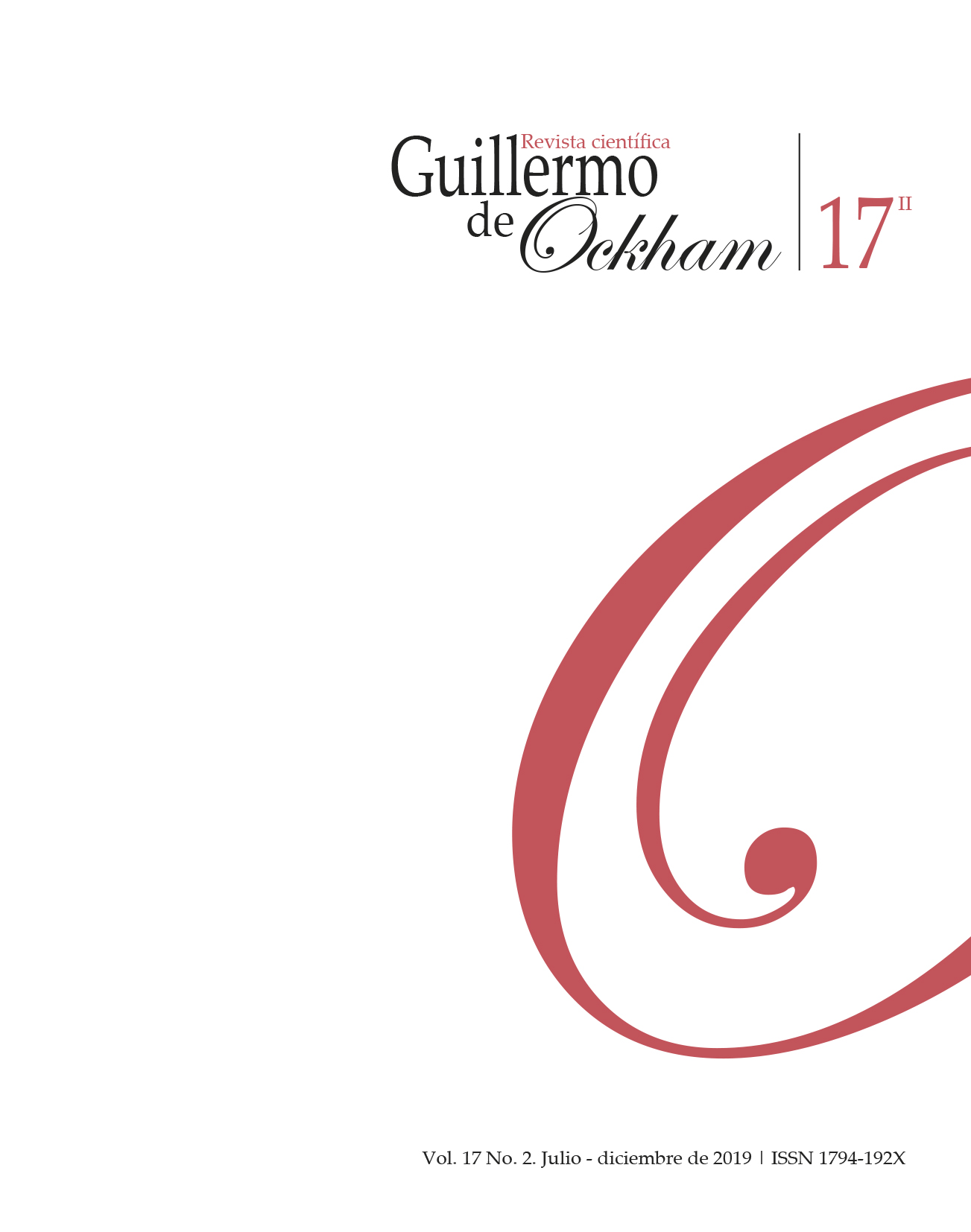The Revista Guillermo de Ockham provides an immediate and open access to its content, based on the principle of offering the public a free access to investigations to provide a global interchange of knowledge.
Unless otherwise established, the contents of this journal has a license with Creative Commons Attribution-NonCommercial-NoDerivatives 4.0 International (CC BY-NC-ND 4.0) http://creativecommons.org/licenses/by-nc-nd/4.0/
- Attribution: You must give appropriate credit, provide a link to the license, and indicate if changes were made. You may do so in any reasonable manner, but not in any way that suggests the licensor endorses you or your use.
- NonCommercial: You may not use the material for commercial purposes.
- NoDerivatives: If you remix, transform, or build upon the material, you may not distribute the modified material.
- No additional restrictions: You may not apply legal terms or technological measures that legally restrict others from doing anything the license permits.
Abstract
El artículo expone el análisis de las representaciones de doce participantes respecto del cálculo operacional al manipular las variables de velocidad, tiempo y distancia y su relación, en la solución de un problema de proporcionalidad presentado por el Software URANUS v1 y tres tareas de control. Se utilizó el método microgenético para analizar los patrones de ejecución y entrevistas semiestructuradas para inferir por análisis de contenido de las verbalizaciones, las representaciones respectivas. Se ilustran tres casos, novato, intermedio y experto, quienes utilizaron diversos cálculos de adición, multiplicación y proporcionalidad y distintas relaciones entre variables, desde la ausencia de nexos, hasta concebirlas interrelacionadas respecto de la distancia. Cinco sujetos intermedios presentaron la representación tipo R3 de cálculos aditivos con relación entre las variables que produce efectos. Un experto reveló la representación tipo R5 de cálculo proporcional. En síntesis, la solución del problema exige complejas interacciones, sujeto, tarea y contexto social educativo.
































